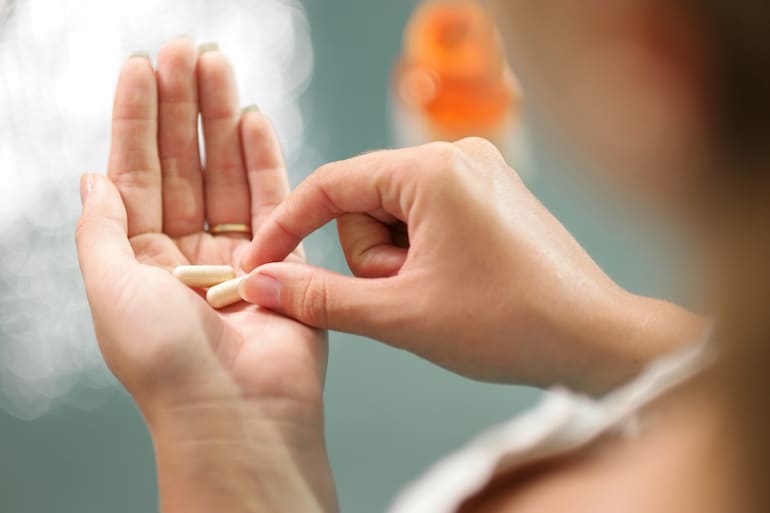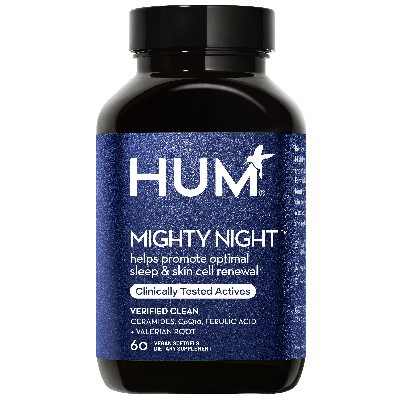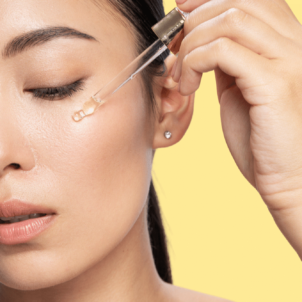Have you ever noticed how a blemish can improve by the hour? Over time, it starts to look lighter and flatter, until it eventually disappears completely—almost like magic. Except, there’s nothing magical about it. Instead, skin cell turnover is the reason blemishes eventually vanish. If you’re into skincare, you’ve probably heard this term before. In some ways, it’s the holy grail of the skin health world. So how does cell turnover work, why is it important, and what can you do to ensure your skin is doing it well? Answers, ahead.
What is Skin Cell Turnover?
Skin cell turnover is the shedding of dry dead skin cells from the uppermost and outermost layer of our skin, known as the stratum corneum,” explains Vanessa Coppola, FNP-BC, a board-certified nurse practitioner and aesthetic specialist. Those dead skin cells are then replaced by healthy new cells, she adds, giving you that fresh-faced look.
The fact that our bodies do this is actually pretty amazing. “The skin is the body’s largest protective organ, so the body is constantly in the process of repairing it,” Coppola says.
As for how quickly it happens, the turnover process happens at different rates on different parts of our body, notes Alexander Zuriarrain, MD, FACS, a double board-certified plastic surgeon. “For your face, it takes approximately between 40 to 56 days for the cells to replicate. The cell turnover for the body is between 28 to 40 days. In general, the human body is producing 3.8 million cells every second.”
What Else Impacts Skin Renewal Rate?

Lots of different factors can affect how quickly our skin regenerates, according to Zuriarrain. Some of the big ones include our general health, level of hydration, and age. That last one is a big one: “As we age, the cell turnover rate lengthens. For example, at age 18 the cell turnover rate is 14 to 21 days while at the age of 50 years old, it can take up to 60 to 90 days,” Zuriarrain says.
While you can’t fight the natural aging process, lifestyle is a really important factor here, says Natalie Aguilar, a dermatological nurse and licensed aesthetician. “Inflammation, stress, and diet play vital roles,” she says. “We can’t produce healthy cells to replace dying cells if we don’t have a healthy diet or lifestyle.” (HUM dietitian Jessica Bippen, RD even created this 5-day meal plan for skin repair and cell renewal to help you get started!)
What Does An Increased Cell Turnover Rate Mean for Your Skin Health?

There’s a reason so many skincare products and treatments promise faster cell turnover and skin renewal. “Increasing the rate of our cellular turnover can help promote a brighter and more youthful complexion,” Coppola says. Aside from those two benefits, increasing your skin cell turnover rate can also help with acne and aging concerns.
Acne is often caused by a combination of factors, especially clogged follicles, Coppola says. Follicles get plugged up by an accumulation of cellular debris, aka dead skin cells and sebum, she explains. “Speeding up this process of cellular turnover can reduce the accumulation of dead skin cells and lead to clearer skin and a more even-toned complexion.
In terms of age-related skin changes, cell turnover matters because it has a significant influence on the aging process, Zuriarrain notes. “The faster the cell turnover rate, the more youthful the appearance of the skin.” In particular, a faster turnover rate means your skin may respond better to sun damage by replicating cells more efficiently and quickly. “This can replace damaged cells with new cells and avoid further aging,” he adds.
Truth be told, all skin concerns are improved by speeding and improving the quality of our skin cell turnover, Aguilar says. “Wrinkles, dry patches, pigmentation, acne, dullness, and injuries all brighten up and become smoother as the cells are replaced by healthier ones.” (Yes, you can manage acne scarring, razor nicks, and fine lines all by improving skin cell turnover!)
How to Increase Skin Cell Turnover Rate
If better skin is on your mind, there are many ways to increase your skin cell turnover rate, experts say.
Exfoliation

“Exfoliation is key to helping improve the regenerative cycle of cellular renewal,” Coppola notes. That’s because it essentially speeds up the process of removing dead skin cells. There are two types of exfoliation: physical and chemical exfoliation.
Physical exfoliation usually happens in the form of a scrub or dry brushing, but it’s really important to choose the right exfoliant so that you don’t injure your skin, Coppola says. “You want to select a scrub that is very finely milled so that it will get the job done without causing trauma to the skin.” Likewise, if you’re using a dry brush, save it for your body, not face, and go easy. Be especially careful with things like dermaplaning.
Microdermabrasion is also an option for physical exfoliation. “Microdermabrasion is a controlled treatment that delivers a precise and uniform exfoliation,” Aguilar says. It’s usually done every 4-6 weeks, and you’ll want to visit a licensed aesthetician or physician to have it done.
Chemical exfoliation means using skincare ingredients that speed up the process of removing dead skin cells. Some of the best ingredients for this are beta hydroxy acids (salicylic acid) and alpha hydroxy acids (glycolic acid, lactic acid, ascorbic acid). “These acids work to break the bonds between cells, causing them to shed faster and in a more uniform fashion,” Coppola notes.
A combination of the two methods may be best, but keep in mind that it’s is possible to exfoliate too much, so it shouldn’t be your only method to speed up skin cell turnover.
Retinoids and retinol
Made up of vitamin A, retinoids and retinol are powerhouse ingredients. “Retinoids penetrate deep enough to stimulate collagen and elastin fibers,” Aguilar explains. Retinoids also increase the rate at which your body produces new skin cells, resulting in a faster skin cell turnover process.
You can get some retinoids over the counter, but products like Retin-A (tretinoin) and Accutane (isotretinoin) are only available by prescription. Tretinoin is usually used to avoid fine lines, wrinkles, and pigmentation—all of which can happen with age, Zuriarrain says, while isotretinoin is generally used to treat acne.
Hydration and exercise
According to Zuriarrain, adequate hydration and exercise improve vascular blood flow, which can help decrease the signs of aging by boosting turnover. So hitting the gym (or the trails) on a regular basis and keeping a water bottle handy can make a difference.
Get your beauty sleep
Turns out “beauty sleep” isn’t just an adage. You’ve likely heard that your body repairs and recovers while you sleep, but the same is true for your skin. Skin cell renewal is at a peak between approximately 10 p.m. and 4 a.m., as we’ve previously covered, due to a natural rise in levels of human growth hormone (HGH). Skin cells can actually double during this time, making it even more important to get your zZz if you’re going for glow.
Nutrition and supplements

“There’s been a lot of research recently into the microbiome of the skin and the connection between digestive health and skin health,” Coppola notes. “Although no definitive evidence has been generated yet, some studies indicate a possible link between maintaining a healthy gut environment, such as with the use of probiotics, and the health of our skin and cellular turnover.”
“Essential fatty acids, vitamin c, glutathione, and zinc are wonderful supplements that aid in the way our skin repairs itself from the inside out,” Aguilar says. Antioxidants like ferulic acid and CoQ10—found in HUM’s Mighty Night supplement—can also help support skin cell turnover.
Lastly, a healthy diet is the foundation of healthy skin. So it makes sense that good nutrition can help improve skin cell turnover, even if indirectly. “We want our new cells to be as healthy as possible,” Aguilar says. “Living a healthy lifestyle, sleeping adequate hours, eating healthier foods, and managing stress are all vital to a healthy physical canvas.” Not only will it help you look good, but it’ll also help you feel good.











